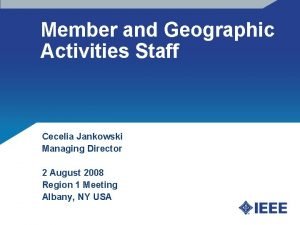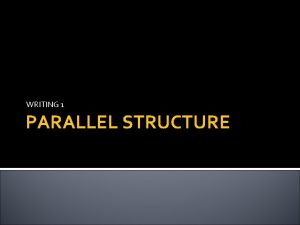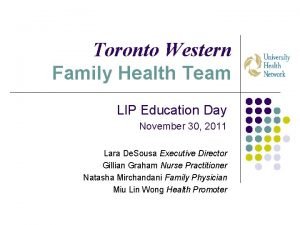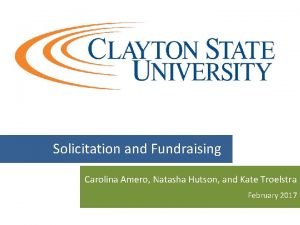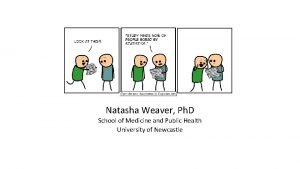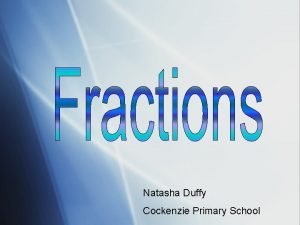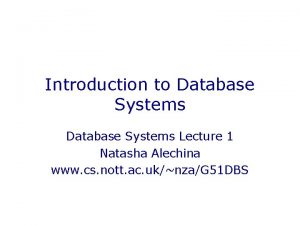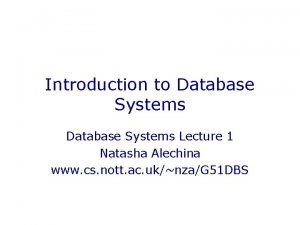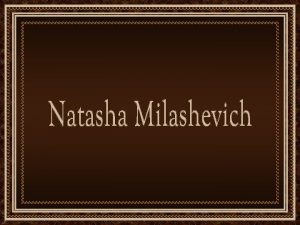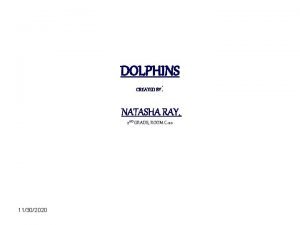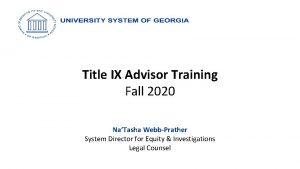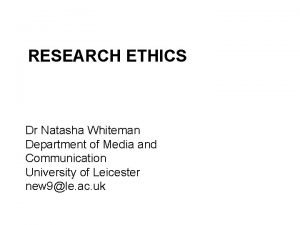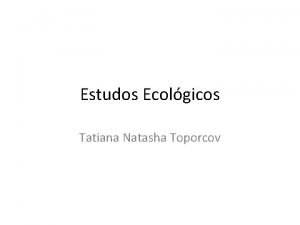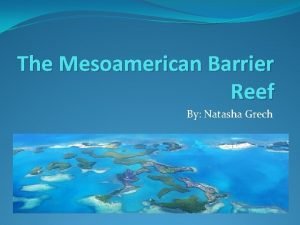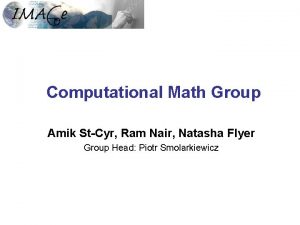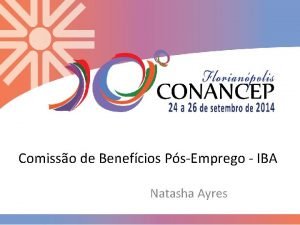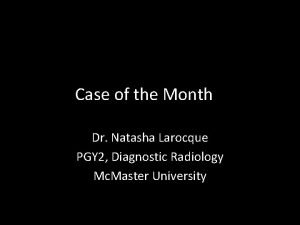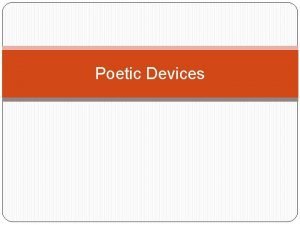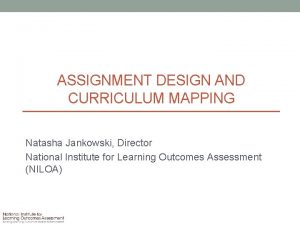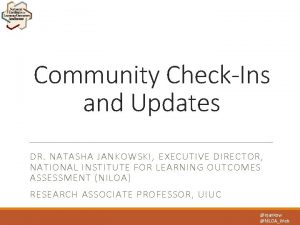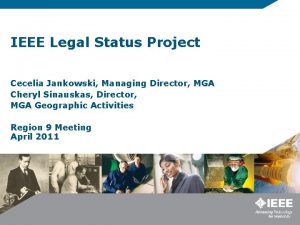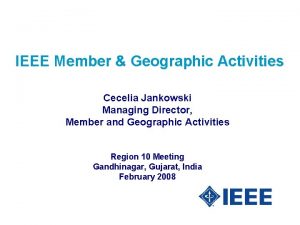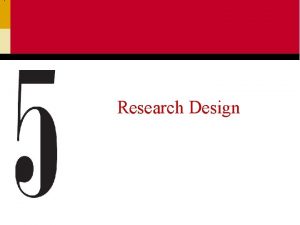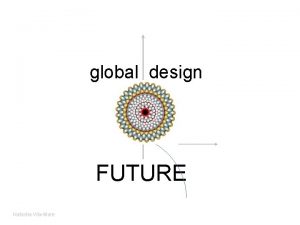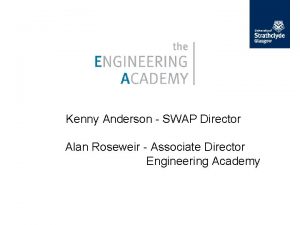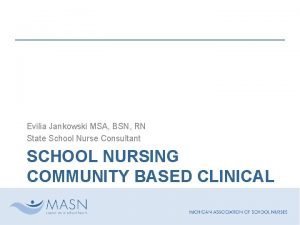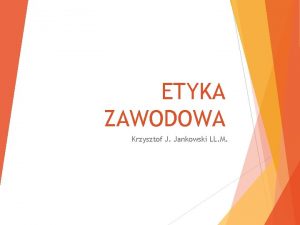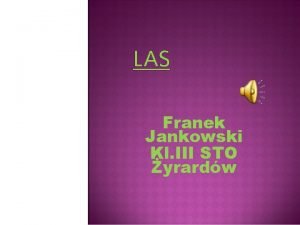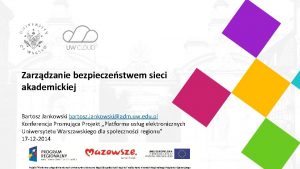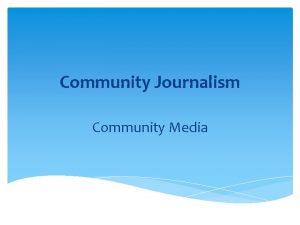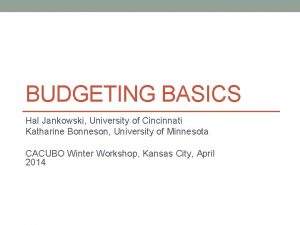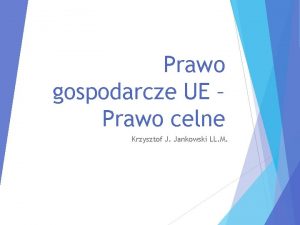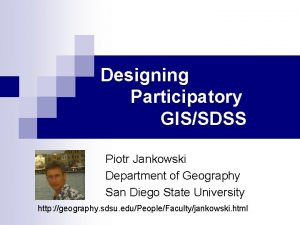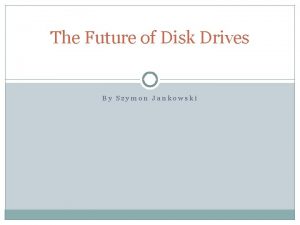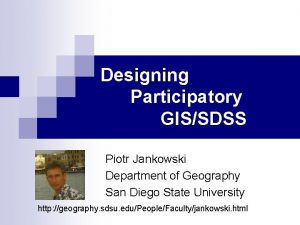ASSESSMENT DESIGN Natasha Jankowski Associate Director NILOA Research
































- Slides: 32

ASSESSMENT DESIGN Natasha Jankowski Associate Director, NILOA Research Assistant Professor, UIUC

NILOA’s mission is to discover and disseminate effective use of assessment data to strengthen undergraduate education and support institutions in their assessment efforts. ● SURVEYS ● WEB SCANS ● CASE STUDIES ● FOCUS GROUPS ● OCCASIONAL PAPERS ● WEBSITE ● RESOURCES ● NEWSLETTER ● PRESENTATIONS ● TRANSPARENCY FRAMEWORK ● FEATURED WEBSITES ● ACCREDITATION RESOURCES ● ASSESSMENT EVENT CALENDAR ● ASSESSMENT NEWS ● MEASURING QUALITY INVENTORY ● POLICY ANALYSIS ● ENVIRONMENTAL SCAN ● DEGREE QUALIFICATIONS PROFILE ● TUNING


Using Evidence

Purpose Why do we do assessment? What is the value and purpose of engaging in assessing student learning?

Value • Institutions of higher education are increasingly asked to show the value of attending, i. e. impact in relation to cost; employment • Public and policy makers want assurance of the quality of higher education • Regional and specialized accreditors are asking institutions to show evidence of student learning and instances of use

WHAT DOES A A DEGREE REPRESENT? seat time? Carnegie credit hours? grade point averages? required courses? clinical hours? All of these suggest what degrees represent in terms of numbers. What do degrees represent in terms of learning?

But… Do our assessments help answer these questions or prepare students for experiences in the “real world” or in the field of employment? How can we offer various approaches to authentically assess student learning – not just in our course, but how our courses connect and add up to an integrated degree or credential? Course Program College General Education

Why Focus on Assignments? Most valuable assessment approaches: • Classroom-based assessment • National student surveys • Rubrics http: //www. learningoutcomeassessment. org/knowingwhatstudentsknowandcando. html

lio s en ts sm rtf o Po s ic ve ys su r se s as ye r pl o an ce rm fo lp er na Em 2013 te r 2009 Ex ea. . . m s ey su rv Ru br sk d ys ve y ni su r op e el de v dg ea nd w le kn o lly lu m A ur nt s de stu ill s al er G en Lo ca na l at io N Percentage of Institutions 100% 90% 80% 70% 60% 50% 40% 30% 20% 10% 0% Change Over Time

Faculty are working to create a curriculum that intentionally builds in integrated learning opportunities over time for students to apply and practice as well as transfer their knowledge and skills through assignments, in and out of courses.

But we have tensions…

Transparency Awareness of Learning Outcome Statements

Rubrics Do we share our rubrics or criteria with students and actively engage them in the review process? Rubric Criteria Student Evaluation Faculty Feedback Rubric Content Stipulate why gave score did Faculty stipulate why gave score did Stipulate what they Targeted feedback need to do to to improve advance

Alignment

Content and Concepts How do we allow space in our courses for time to actively engage students in their learning?

Thoughts on Alignment

Fitness of Method or Approach Part of alignment is fitness of method or approach – if asking students to explain something, multiple choice test might not be the best approach, but if asking students to identify – it might be very appropriate…

Verbs (and I don’t mean Bloom’s) • Alignment and fitness of method occur in relation to the verbs identified in the learning outcome statement • In your own assignment – what are you asking students to actually do or demonstrate?

Elicit How an assignment is aligned is important but also how it elicits an example of student demonstration of the outcome in question is equally important. • Scaffolding of outcome in a course or across courses • Number of outcomes addressed in an assignment • Assignment directions to students – is the outcome implicit or explicit? • Preparation – how are we preparing students to complete the assignment?

Alignment • How do you ensure alignment between our assignments and a given learning outcome for a learning experience? • How do we create assignments and activities that will elicit student demonstration of a specific learning outcome? • How do we know that we have mapped our assignment to rubric criteria?

Elements to consider in design • Can’t take on too many outcomes in one assignment- what are the outcomes? What are the verbs? • Build and scaffold over time – how are you preparing students to complete the assignment? How does it ask students to integrate and apply learning? • Complete the assignment yourself – what does a ‘good’ response look like? • Have we solicited student feedback on assignment?

Possibilities Ideas on assignment modification • Shifting audience (in writing assignment) • Modify genre (blog, pamphlet, drama, graphic novel, poster, oral presentation, debate) • Practice throughout courses • Planning and timing of feedback

24 The NILOA Initiative • An online library of high-quality peer-endorsed assignments linked to DQP outcomes. • Designed by faculty, part of the intellectual work they already do, course embedded. • Building on campus efforts already underway • Reflecting a conception of assessment as integral to teaching and learning vs “exoskeleton” (Ewell 2013).

What we did (and will do again) • Invited faculty applications (with draft assignment) • Brought the group together for a day-long meeting • Worked in 5 -6 person, facilitated “charrettes”

• 76% of participants said “it helped me more clearly see my assignment through my students’ eyes. • 59%: I’m more aware of aligning my assignments with desired institutional outcomes. • 38%: helped to lead or facilitate an event about assignment design on their campus

CHARRETTE TIME!

What Are We Up To Here? • A chance to refine an assignment you’re working on • To contribute to the work of others • To meet like-minded colleagues in other areas

What’s a“charrette”? "Charrette" (Fr. ) means a small cart. Because architecture students once deposited their assignments in it as the cart was rolled through the studio, architects now use the word to refer to an intense creative effort in a limited time period. 29

Aussi. . . In the tradition of the “atelier, ” architecture students progress through the curriculum in the company of their mentors and peers. This approach offers an interesting model for an integrated education. (b) The tradition rests on the assumption that much of your learning will come from one another. (a) 30

Small Group Process 25 -30 minute segments person/assignment ØPresent assignment briefly—which outcomes, what course, which students, how does it work…. ØDiscussion with group (focus on questions on feedback form) ØSave 5 minutes for written feedback ØBreath ØStart again… ØDebrief at end

Discussion Thank you! Email: njankow 2@illinois. edu www. degreeprofile. org www. assignmentlibrary. org www. learningoutcomesassessment. org
 Natasha jankowski
Natasha jankowski Analyst hierarchy
Analyst hierarchy Cecelia jankowski
Cecelia jankowski Cecelia jankowski
Cecelia jankowski Adobe certified associate visual design specialist
Adobe certified associate visual design specialist In the restroom tishena was brushing her hair
In the restroom tishena was brushing her hair Fht twh
Fht twh Natasha hutson
Natasha hutson Natasha weaver
Natasha weaver Natasha duffy
Natasha duffy Natasha alechina
Natasha alechina Natasha alechina
Natasha alechina Natasha tierney
Natasha tierney Natasha bowler
Natasha bowler Natasha milashevich
Natasha milashevich Types of famil
Types of famil Natasha ray
Natasha ray Natasha webb prather
Natasha webb prather Natasha whiteman
Natasha whiteman O que é um estudo ecológico
O que é um estudo ecológico Meso natasha
Meso natasha Natasha werpy
Natasha werpy Natasha st cyr
Natasha st cyr Natasha ayres
Natasha ayres Natasha larocque
Natasha larocque Natasha niemi
Natasha niemi Natasha tracy
Natasha tracy Natasha gerolami
Natasha gerolami Natasha sharygina
Natasha sharygina Natasha lee muscle
Natasha lee muscle Method vs methodology
Method vs methodology Appendix in research example
Appendix in research example Qualitative research methods
Qualitative research methods


